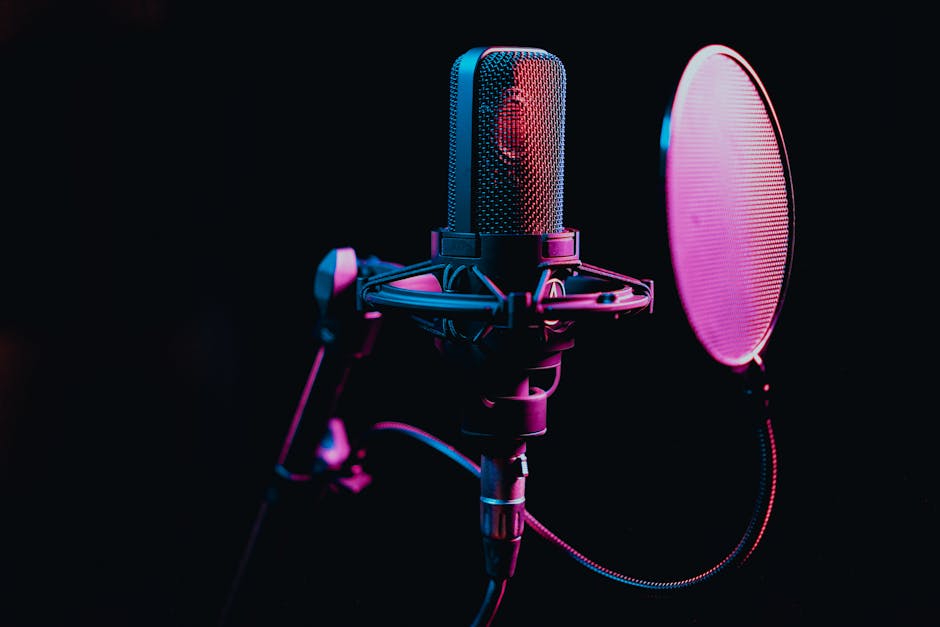My Head-to-head Comparison: Audacity Vs. Garageband for Audio Editing.
My Head-to-head Comparison: Audacity Vs. Garageband for Audio Editing
As someone who’s spent countless hours tweaking waveforms, cutting silences, and sweetening vocals, I’ve had my hands on a fair share of audio editing software. For beginners and even many seasoned creators, two names often pop up first when discussing free or readily available tools: Audacity and Garageband. Both offer a gateway into the world of audio production without requiring a significant financial investment, but they approach the craft from very different angles. This isn’t just a feature list comparison; it’s my personal deep dive into how these two titans stack up against each other for various audio editing tasks, from podcasting to basic music creation.
My journey with audio editing started with simple voiceovers and grew into more complex projects involving multiple tracks and effects. Through it all, I’ve found myself repeatedly turning to either Audacity or Garageband, depending on the specific demands of the project at hand. The question isn’t just “which is better?”, but “which is better for *you* and *your* specific needs?” Let’s break down my experiences.
Setting the Stage: My First Impressions of Audacity’s Simplicity vs. Garageband’s Polish
When I first launched Audacity, I was immediately struck by its minimalist, almost utilitarian interface. It felt like a digital workbench, stripped down to the essentials. The waveform was front and center, with a clear toolbar for common actions like record, play, cut, copy, and paste. There’s a distinct lack of visual clutter, which, for a newcomer, can be incredibly reassuring. It speaks to a philosophy of direct, destructive editing – what you see is what you get, and when you apply an effect, it changes the audio data directly.
Garageband, on the other hand, presented a much more inviting and visually rich experience right from the start. As an Apple product, it carries that familiar macOS aesthetic: sleek, intuitive, and designed to look good. It felt less like a workbench and more like a virtual studio, complete with virtual instruments and a clear multitrack timeline. My initial impression was that Garageband was trying to be a complete music production suite, while Audacity was laser-focused on being a robust audio editor.
The Interface Philosophy: Raw Power vs. Creative Flow
Audacity’s design, while simple, can feel a bit dated to some. Its strength lies in its directness. If I need to quickly record a voice memo, clean up some background noise, or normalize a single audio file, Audacity is often my first thought. Its menu-driven effects are powerful, but applying them is often a “commit and move on” process. There’s a learning curve to understanding its destructive nature, meaning edits are applied permanently unless you undo them immediately.
Garageband’s interface, conversely, is built for a creative flow. It’s a non-destructive editor, meaning I can apply effects, change volumes, and move audio clips around without permanently altering the original file. This flexibility is a huge advantage, especially when I’m experimenting with different sounds or mixing multiple elements. The drag-and-drop functionality for loops and instruments makes it feel more like playing than working. However, this polish sometimes comes with a slight learning curve for pure audio editing tasks, as the focus isn’t solely on waveform manipulation.
Unpacking the Editing Power: How Audacity Handles Raw Audio vs. Garageband’s Multitrack Magic
When it comes down to the nitty-gritty of editing, both tools have their unique strengths. My experience has shown me that they excel in different arenas, making the choice project-dependent.
Audacity truly shines when I’m dealing with single-track audio files that need meticulous cleaning or precise adjustments. Need to remove a hum from a vocal recording? Audacity’s built-in Noise Reduction tool is incredibly effective and straightforward. Its ability to analyze a noise profile and then apply a reduction across the track is a game-changer for spoken word content. I’ve used it countless times to salvage recordings with HVAC noise or computer fan hum. For tasks like precise cutting, trimming, and fading, Audacity’s zoom capabilities and selection tools make it incredibly accurate. It’s fantastic for editing podcasts where a single voice track is the primary focus, allowing for quick removal of “ums,” “ahs,” and long pauses. It’s also excellent for batch processing multiple files with the same effects.
Garageband, however, enters a different league when I need to juggle multiple audio sources simultaneously. Its multitrack interface is intuitive, allowing me to easily layer vocal tracks over background music, add sound effects, or even record a new instrument track while listening to existing ones. This non-destructive workflow is invaluable for projects like creating intro/outro music for a podcast, mixing a simple song, or producing layered audio dramas. The ability to quickly adjust volume, pan, and apply effects to individual tracks independently without affecting the original audio is a massive advantage. I can try out different arrangements, move clips around, and experiment freely, knowing I can always revert my changes. This makes it a powerful tool for anything beyond basic, single-track cleanup.
Specific Editing Scenarios in My Workflow
- Podcasting & Voiceovers: For a solo podcast or voiceover, where my primary goal is to clean up a single vocal track, Audacity often wins. Its dedicated noise reduction, normalization, and compressor tools are quick and effective for making a voice sound professional. However, if I’m adding intro music, multiple interviewees, or complex sound beds, Garageband’s multitrack environment is far superior for mixing and arranging. To enhance your podcast audio, understanding the strengths of each is key.
- Music Demos: Garageband is the undisputed champion here. Its vast library of loops, virtual instruments, and built-in amp simulators allow me to sketch out song ideas quickly. Audacity, while capable of recording instruments, lacks the creative tools and non-destructive multitrack environment needed for music production.
- Simple Sound Design & Effects: Both offer a range of effects. Audacity’s effects are more about corrective audio (EQ, compression, noise reduction). Garageband also has these but integrates them more seamlessly into a mix, plus it offers creative effects like reverb, delay, and modulation, which are more geared towards sound design.
Beyond the Basics: My Take on Effects, Plugins, and Sound Quality in Both Editors
Once you move past basic cuts and trims, the world of audio editing opens up to effects, plugins, and the subjective quality of the output. This is where the differences between Audacity and Garageband become even more pronounced in my experience.
Audacity, being open-source, supports a wide range of third-party plugins, primarily VST (Virtual Studio Technology) and LADSPA. This means I can expand its capabilities significantly with external tools. While its built-in effects are solid for standard tasks like equalization, compression, and reverb, the ability to add specialized plugins for more advanced noise reduction, mastering, or unique sound design is a major plus.




Post Comment